Salmon and Shrimp Recipes
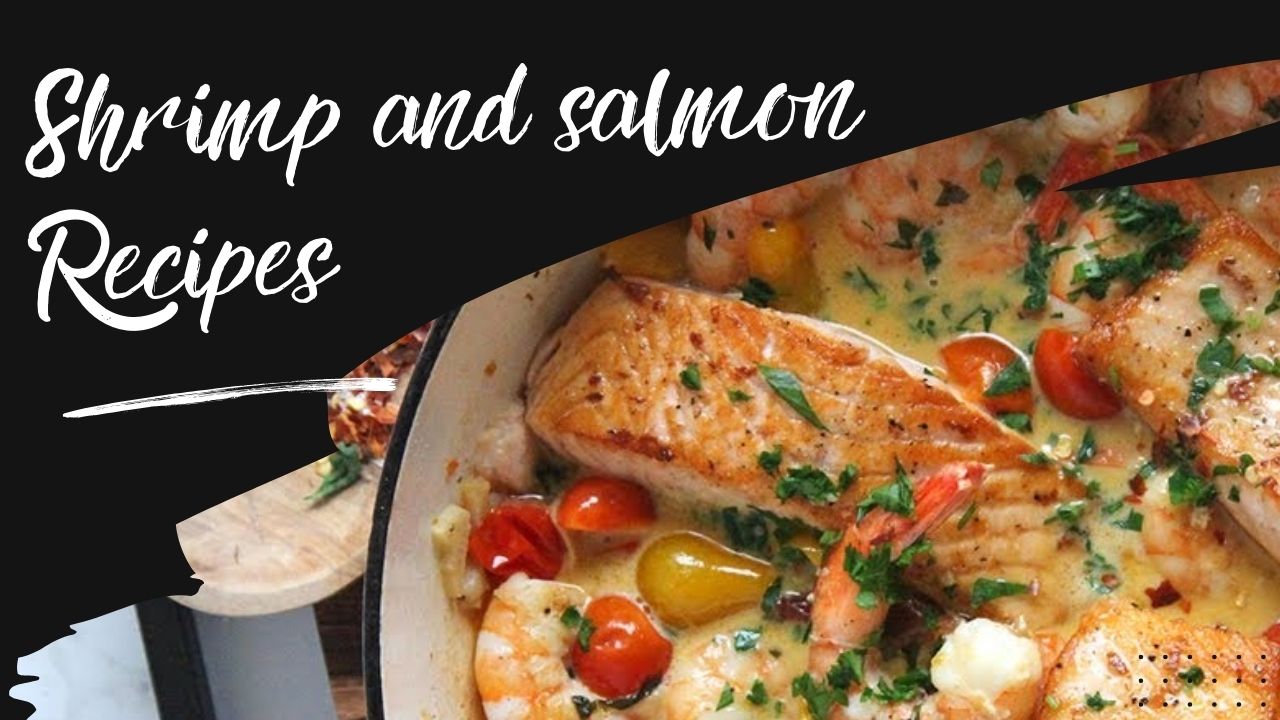
I still remember the first time I tasted the perfect blend of salmon and shrimp.It was like the ocean on a plate, rich, buttery, and packed with flavor. This dish combines the tender flakiness of salmon with the juicy bite of shrimp, creating a seafood lover’s dream. Originating from coastal cuisines, it’s a favorite in fine dining and home kitchens alike, thanks to its high protein content and heart-healthy omega-3s. In this article, I’ll walk you through an easy step-by-step recipe, share pro tips for perfect seasoning, and suggest tasty variations to make it your own!
Global Twists & Best Ingredients
From spicy Cajun-style seafood boils in the U.S. to buttery garlic shrimp and salmon in Mediterranean cuisine, this dish is enjoyed worldwide with unique flavors. For the best taste, use fresh salmon fillets and large, deveined shrimp—they cook evenly and stay juicy. A non-stick pan or grill helps lock in flavors, while a simple marinade boosts taste.
Prep & Cook Time: 30 minutes
Essential Equipment
- Non-stick Pan or Grill – Even cooking, no sticking
- Sharp Knife – Clean salmon & shrimp cuts
- Mixing Bowl – Easy marinade prep
- Tongs – Safe flipping & handling
- Basting Brush – Even sauce application
- Measuring Cups & Spoons – Accurate seasoning
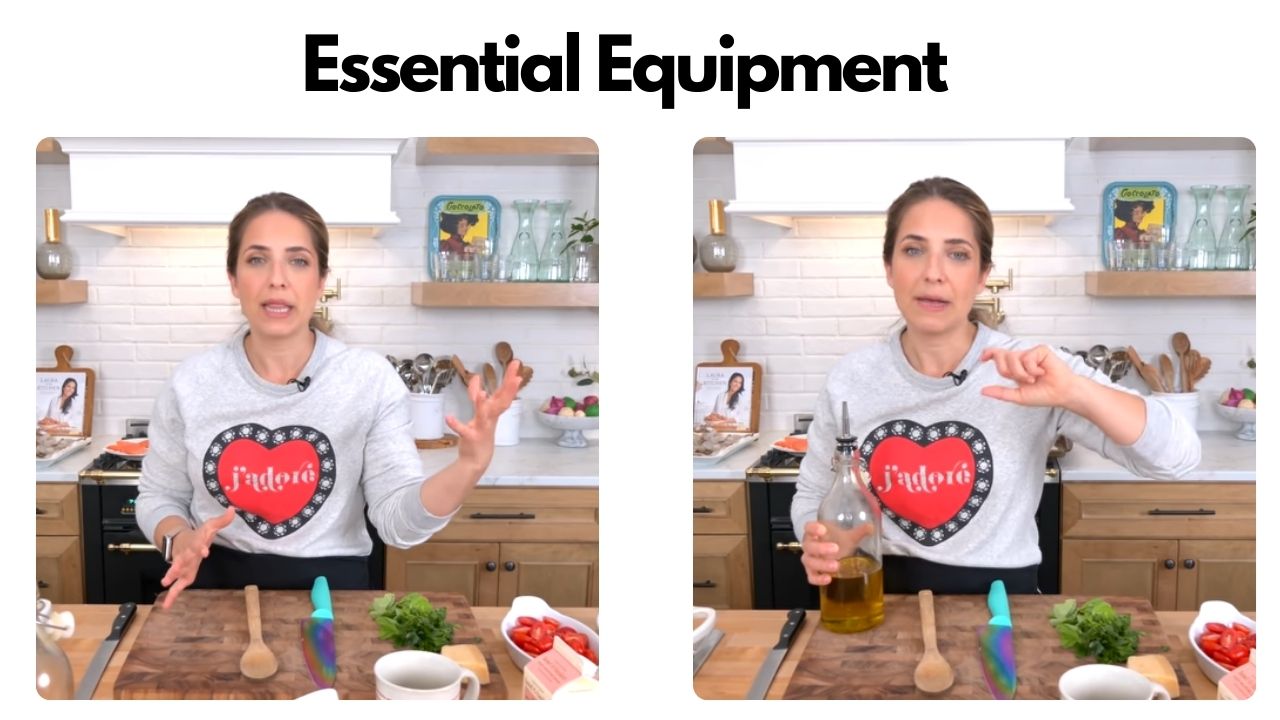
Ingredients<br><br>For the Salmon & Shrimp
2 salmon fillets (6 oz each) – Rich, flaky texture & deep flavor
1/2 lb shrimp (peeled & deveined) – Juicy, slightly sweet taste
1 tbsp olive oil – Enhances browning & prevents sticking
1 tbsp lemon juice – Adds fresh tang & brightness
1 tsp garlic powder – Boosts savory depth
1 tsp smoked paprika – Gives a warm, smoky kick
1/2 tsp salt – Brings out natural flavors
1/4 tsp black pepper – Adds mild heat
- For the Sauce/Marinade
2 tbsp butter (melted) – Adds richness & silkiness
1 tbsp honey – Balances flavors with a hint of sweetness
1 tsp soy sauce – Deepens umami & saltiness
1 tsp Dijon mustard – Adds a slight tangy bite
1 clove garlic (minced) – Brings aromatic depth
Step-by-Step Guide to Making Salmon & Shrimp
1. Prepare the Ingredients (10 minutes)
Clean & Trim:
- Rinse the salmon fillets under cold water and pat dry with paper towels.
- Remove any bones using tweezers.
- Peel and devein the shrimp, if not already done.
Setup:
- Preheat the oven to 375°F (190°C) if baking, or heat a pan over medium-high heat if using a stovetop.
- Line a baking sheet with parchment paper or lightly oil a skillet.
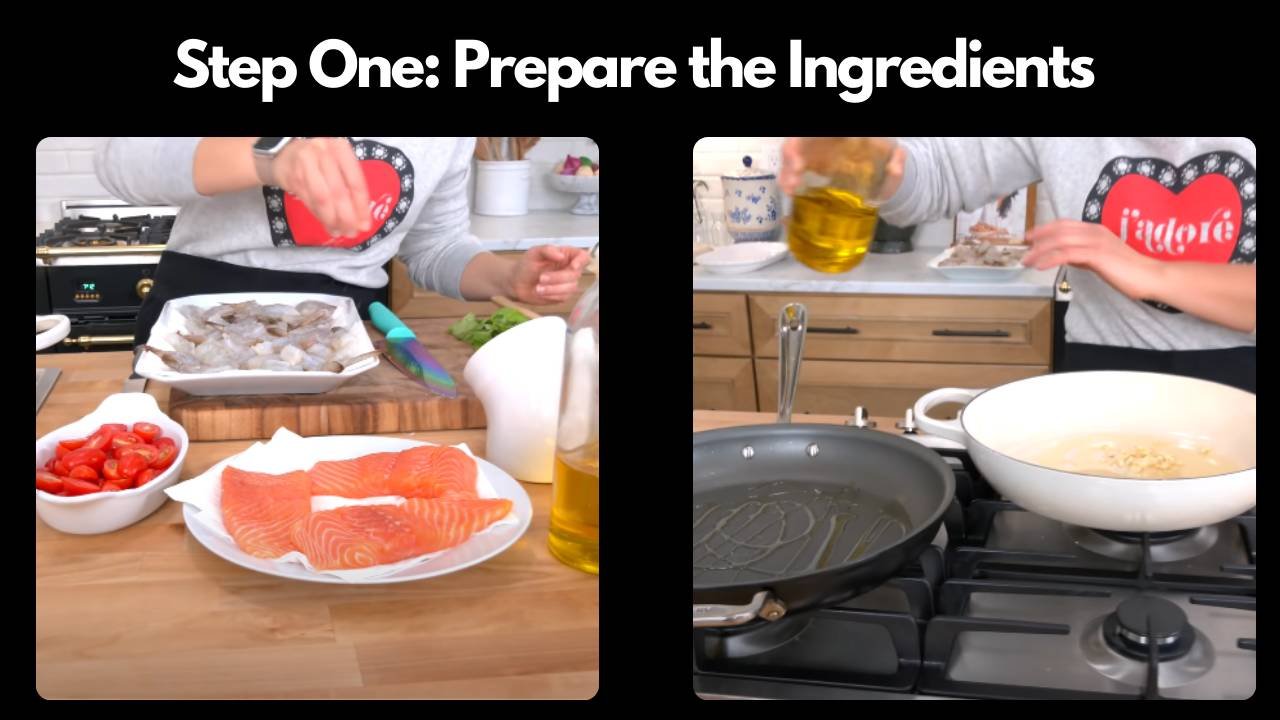
2. Season & Marinate (15 minutes)
Make the Marinade:
- In a bowl, whisk together melted butter, honey, soy sauce, Dijon mustard, minced garlic, lemon juice, and paprika.
Coat the Salmon & Shrimp:
- Place the salmon fillets in a dish and pour half of the marinade over them, ensuring even coverage.
- Toss the shrimp in a separate bowl with the remaining marinade.
- Let them rest for 10-15 minutes for deeper flavor absorption.
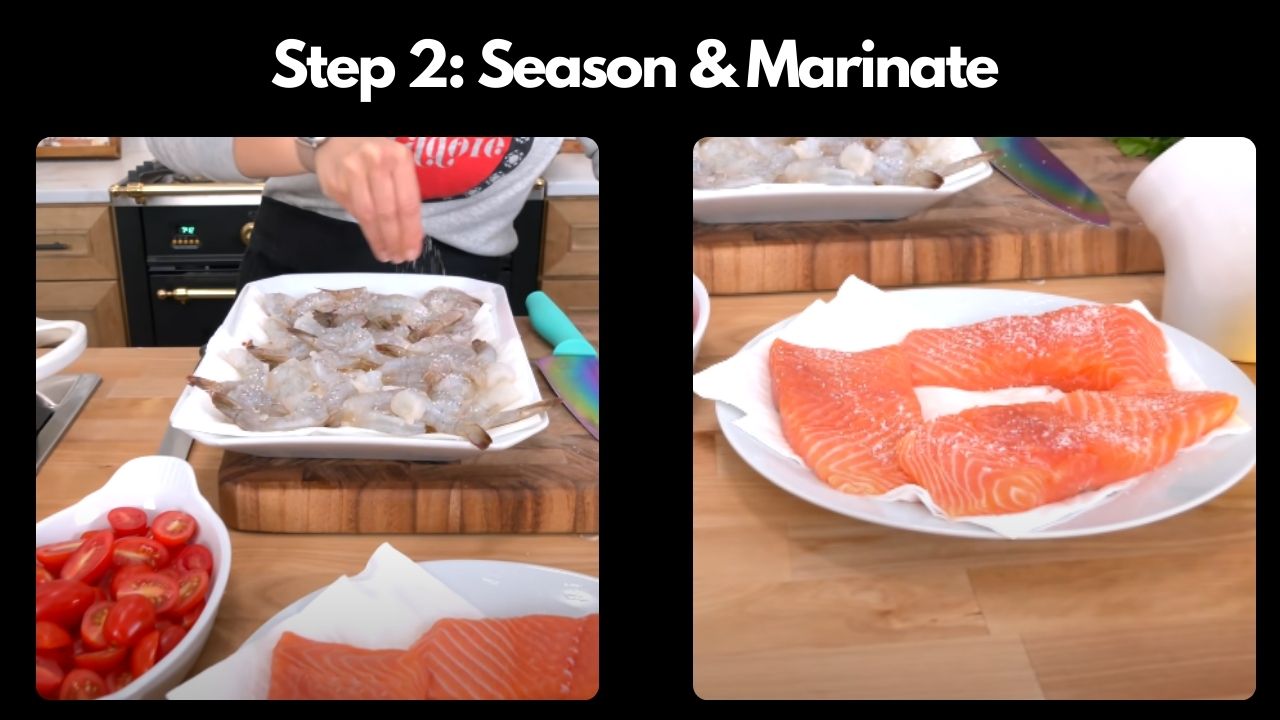
3. Cook the Salmon & Shrimp (10-12 minutes)
Oven Method:
- Arrange the salmon on a baking sheet and bake for 10 minutes.
- Add shrimp to the same sheet and cook for an additional 2-3 minutes, or until pink and opaque.
Stovetop Method:
- Heat 1 tbsp olive oil in a pan over medium-high heat.
- Sear the salmon skin-side down for 4-5 minutes, then flip and cook for another 3-4 minutes.
- In the same pan, sauté shrimp for 2 minutes per side until fully cooked.
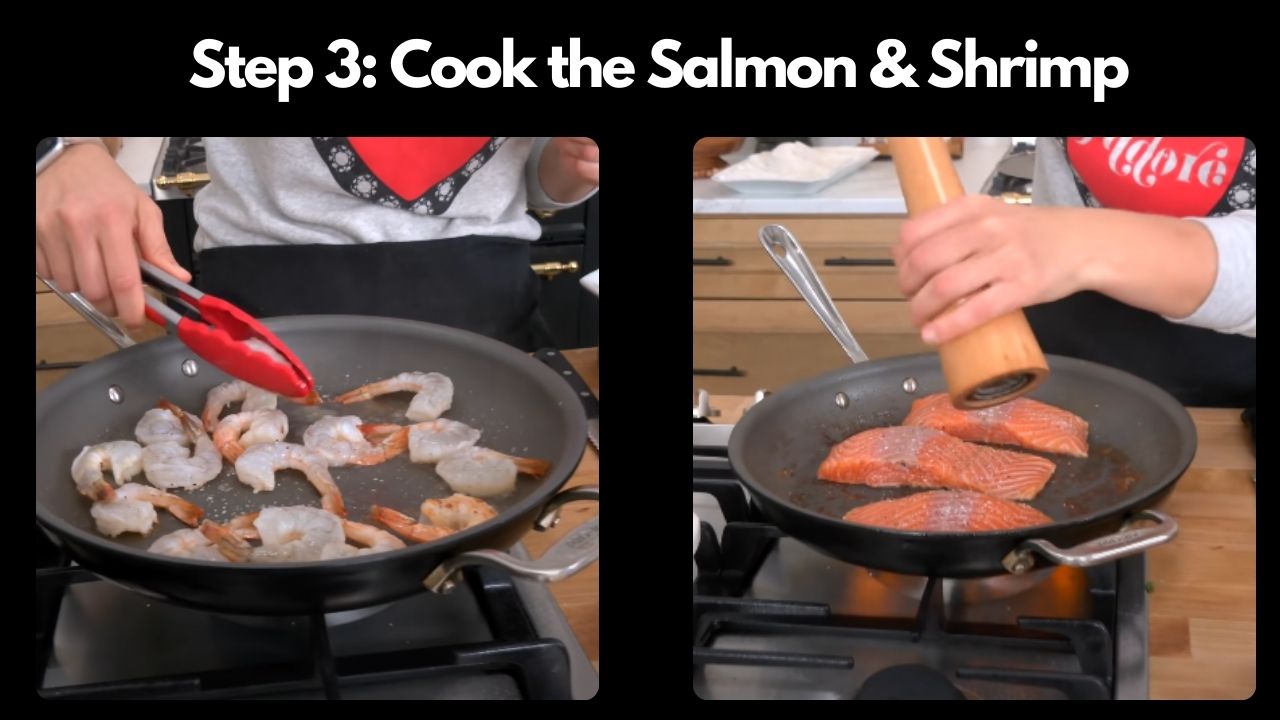
4. Serve & Enjoy!
- Drizzle extra marinade over the salmon and shrimp.
- Garnish with fresh parsley or lemon wedges.
- Pair with rice, roasted veggies, or a fresh salad for a complete meal!
Enjoy your perfectly cooked salmon & shrimp—juicy, flavorful, and restaurant-quality right at home!
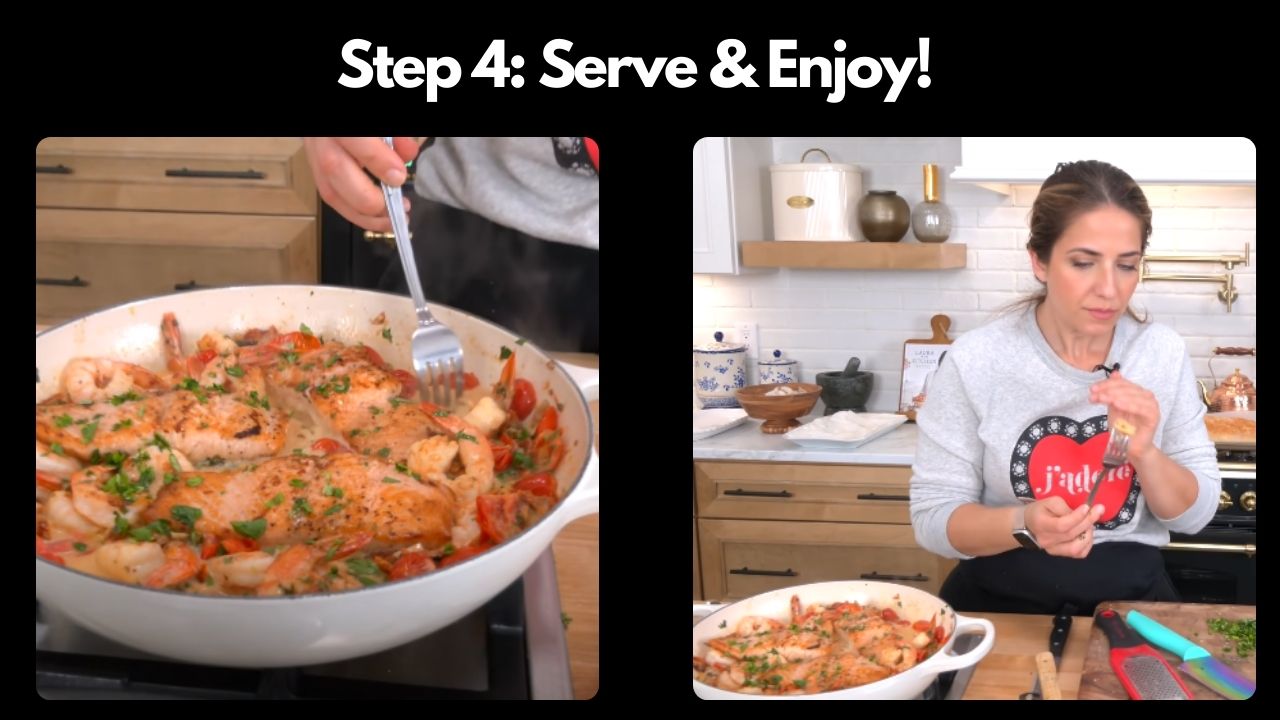
Common Mistakes & How to Avoid Them
Cooking salmon and shrimp may seem simple, but small mistakes can ruin the dish. Here’s what to watch out for and how to fix it:
1. Overcooking the Seafood
- Mistake: Salmon becomes dry, and shrimp turn rubbery if cooked too long.
- Fix: Cook salmon until it flakes easily (145°F or 63°C internal temperature). Shrimp should turn pink and opaque—2 minutes per side is enough.
2. Skipping the Marinade
- Mistake: Not letting the salmon and shrimp absorb flavors leads to bland results.
- Fix: Let them marinate for at least 10–15 minutes before cooking.
3. Using High Heat for Too Long
- Mistake: Cooking over very high heat can burn the outside while leaving the inside raw.
- Fix: Use medium-high heat for stovetop cooking and 375°F (190°C) for baking.
4. Not Patting Dry Before Cooking
- Mistake: Excess moisture prevents proper searing, making seafood soggy.
- Fix: Pat salmon and shrimp dry with a paper towel before seasoning.
5. Uneven Cooking
- Mistake: Cooking shrimp and salmon together from the start makes one overcook.
- Fix: Start with salmon, then add shrimp in the last few minutes to ensure even doneness.
6. Not Using the Right Pan or Sheet
- Mistake: Using a non-stick pan for searing prevents proper browning.
- Fix: Use a cast-iron skillet for a perfect sear, or a lined baking sheet for oven cooking.
7. Overcrowding the Pan
- Mistake: Too much seafood in one pan steams instead of sears.
- Fix: Cook in batches to allow proper heat distribution and crisp edges.
Facts & Figures About This Recipe
| Factor | Details |
|---|---|
| Average Cost 💰 | Salmon costs $10–$20 per pound, shrimp $8–$15 per pound (varies by size & region). |
| Nutritional Breakdown 🥗 | Per serving (~6 oz): Salmon: 250-300 calories, 20g protein, 15g healthy fats. Shrimp: 100-120 calories, 22g protein, 1g fat. |
| Weight Management ⚖️ | High protein & omega-3s make it great for weight loss. Shrimp is low in fat, while salmon provides healthy fats for energy. |
| Popularity by Region 🌎 | North America & Europe: 75% favor salmon 🐟, while Asia & Latin America: 65% prefer shrimp 🍤. Both are widely enjoyed worldwide. |
| Health Benefits ❤️ | Omega-3s improve heart health, protein aids muscle growth, and low-carb content makes it keto-friendly. |
Frequently Asked Questions (FAQs)
1. How do I know when the salmon and shrimp are fully cooked?
Salmon is done when it flakes easily with a fork and reaches an internal temperature of 145°F (63°C). Shrimp should turn pink and opaque, usually in 2–3 minutes per side on medium heat.
2. Can I use frozen salmon and shrimp for this recipe?
Yes, but make sure to thaw them completely in the fridge for 8–12 hours or use the cold water method (submerge in cold water for 30 minutes). Pat dry before cooking to avoid excess moisture.
3. How can I make this recipe for more or fewer servings?
Simply adjust the ingredient quantities proportionally. For example, if doubling the recipe, double all ingredients but keep the cooking times the same unless the thickness of salmon changes.
4. What is the best way to store leftovers, and how long do they last?
Store in an airtight container in the fridge for up to 3 days. For longer storage, freeze for up to 2 months. Reheat gently on low heat to prevent dryness.
5. Can I make this recipe without an oven or grill?
Yes! You can cook salmon and shrimp in a pan on the stovetop with a little oil over medium heat. Salmon takes 3–5 minutes per side, and shrimp takes 2–3 minutes per side.





